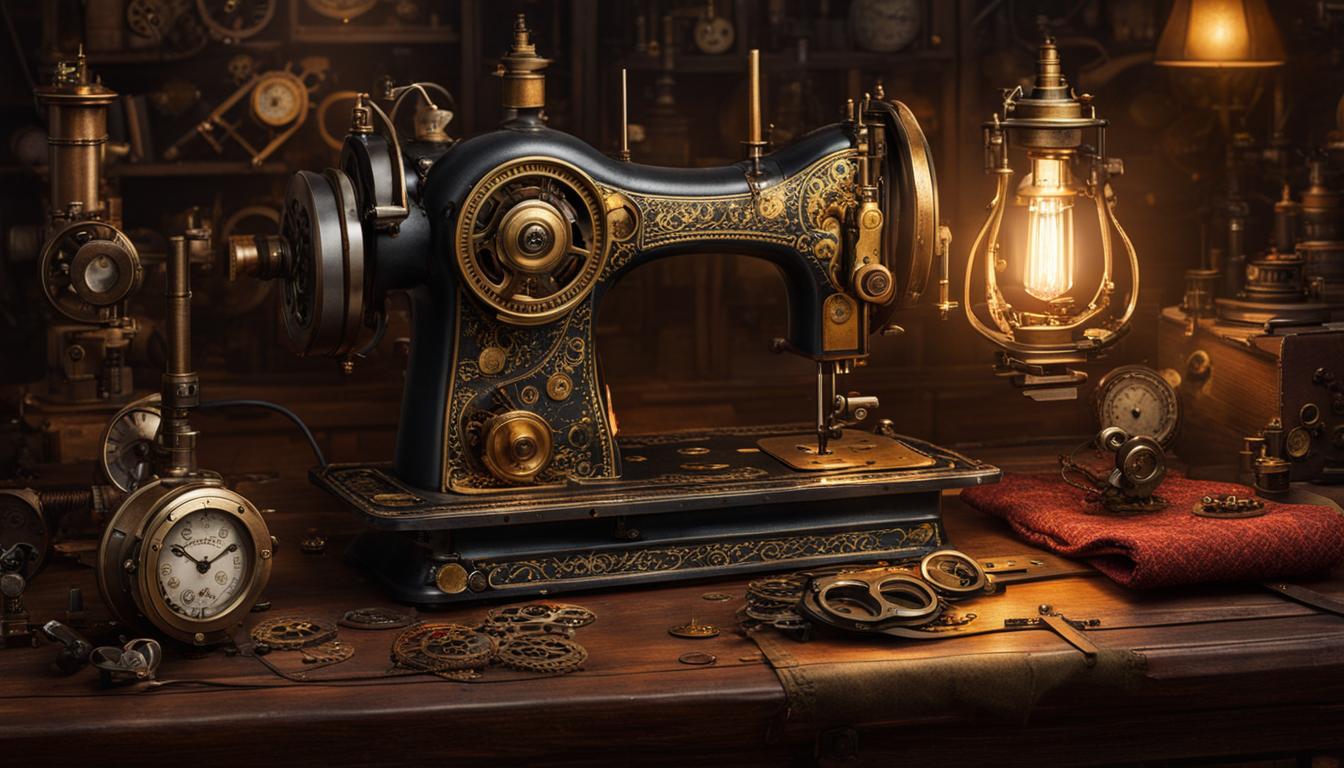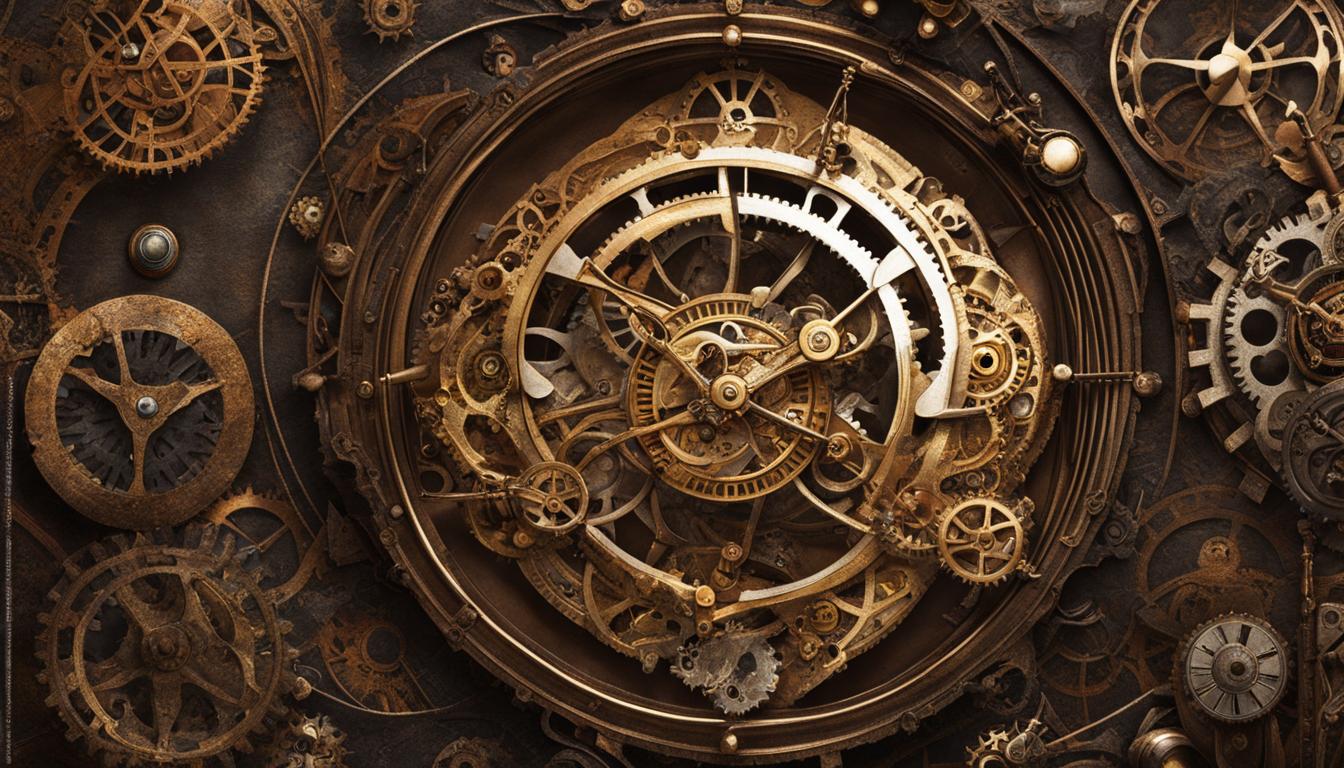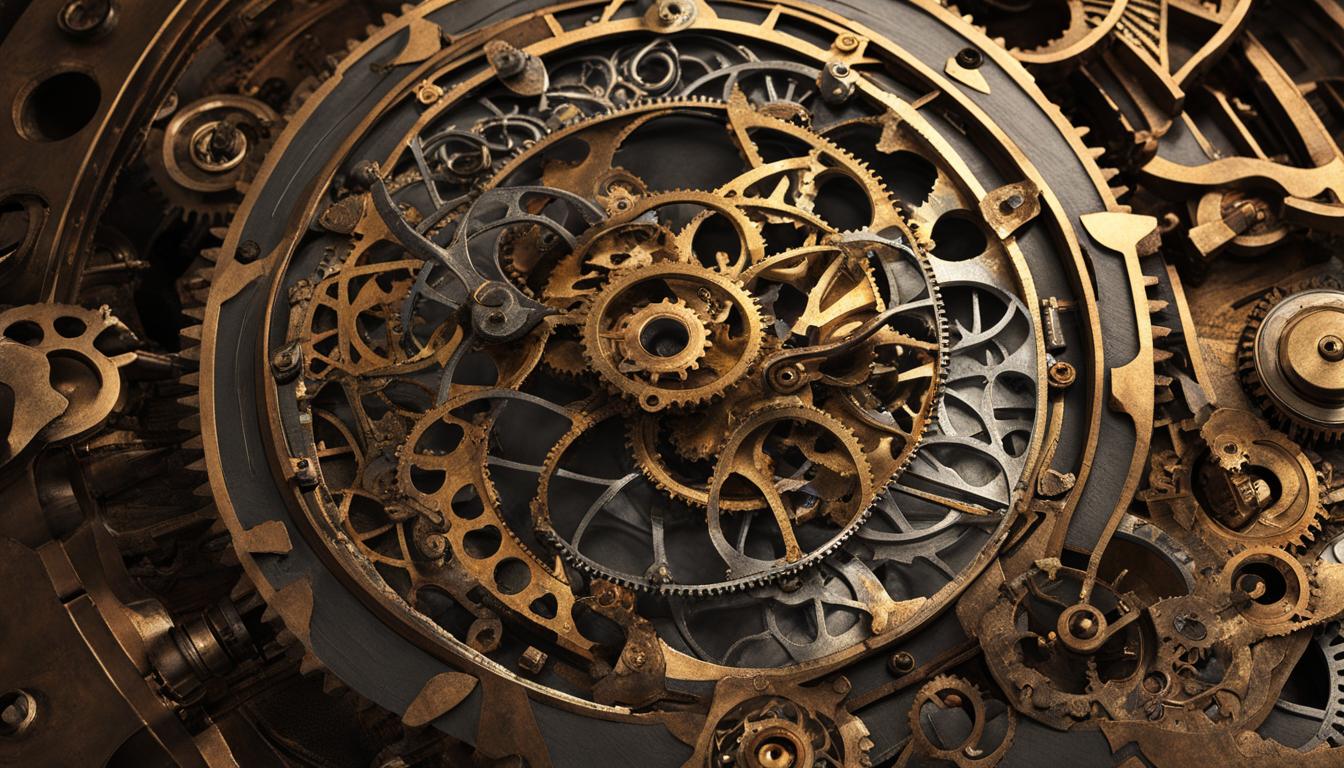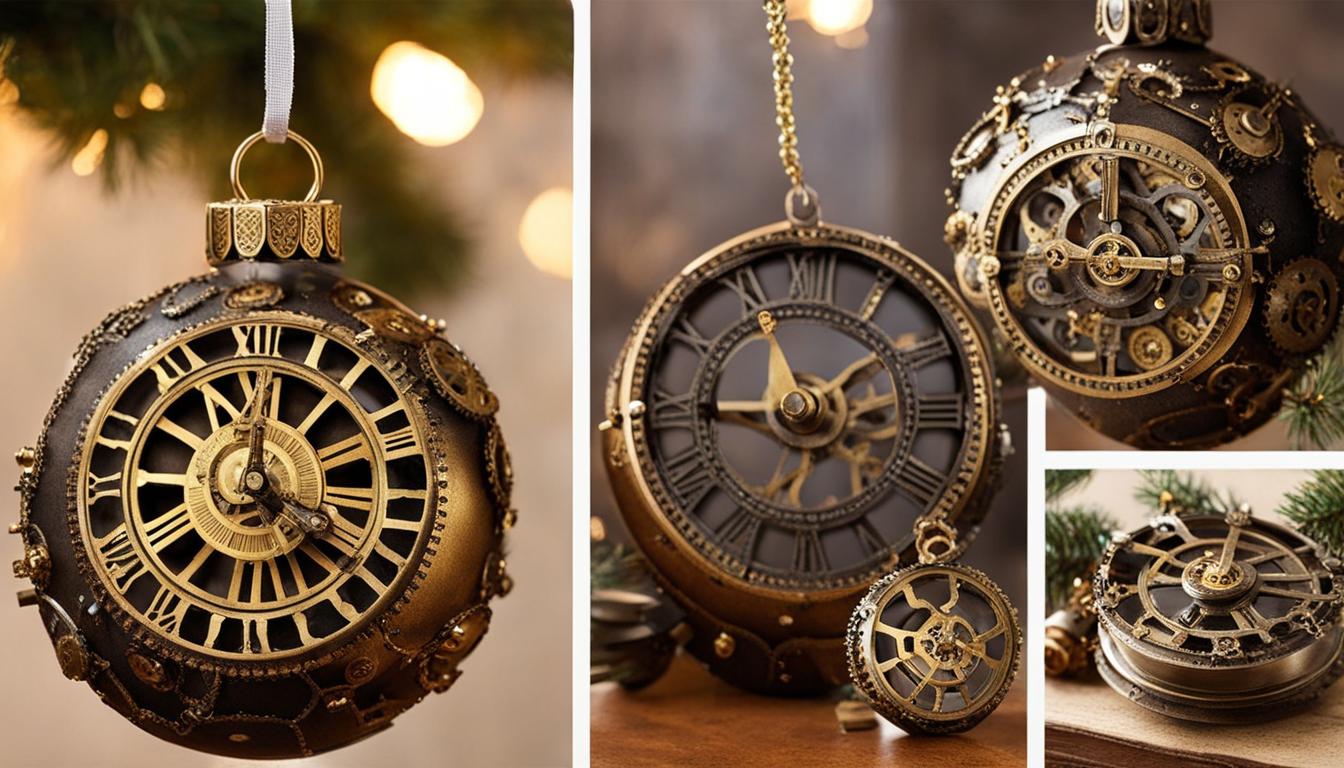In the world of steampunk DIY projects, textiles reign supreme, adding a touch of authenticity and charm to every creation. From clothing to accessories, the strategic use of fabrics brings the steampunk aesthetic to life, blending Victorian elegance with the futuristic essence of the Industrial Revolution. Whether repurposing old garments or crafting new marvels from scratch, it is the textiles that truly encapsulate the vision of steampunk.
Key Takeaways
- Textiles are essential in creating the unique and authentic steampunk aesthetic.
- Fabric choices such as leather, lace, and cotton add depth and character to steampunk creations.
- DIY steampunk fashion can be achieved through repurposing existing garments and incorporating mechanical elements.
- Textiles play a crucial role in enhancing steampunk accessories, from hats and gloves to bags and tool belts.
- Repurposing and upcycling vintage objects with textiles creates a nostalgic and authentic steampunk look.
Unleash your creativity and embark on a mysterious steam-powered journey with textile-based steampunk creations.
How to Make DIY Steampunk Fashion
Making DIY steampunk fashion is an exciting endeavor that allows individuals to showcase their creativity while saving money. With some basic sewing skills and a few essential supplies, anyone can create their own unique steampunk fashion pieces. Whether you’re repurposing existing clothing or starting from scratch, the possibilities are endless.
One popular approach in DIY steampunk fashion is to repurpose old garments by adding gears, clockwork, and other mechanical elements. This can be done using glue or stitching, depending on the desired look. The combination of Victorian-inspired fabrics and futuristic embellishments creates a striking contrast that defines the steampunk aesthetic.
For those looking to create something more elaborate, making a steampunk corset can be a fulfilling project. With the help of a pattern and supplies like fabric, boning, and lacing, a steampunk corset can be crafted step by step. Online tutorials provide comprehensive guidance to ensure success.
DIY steampunk fashion allows individuals to unleash their creativity and showcase their unique style. By incorporating textiles and mechanical elements, enthusiasts can create one-of-a-kind pieces that embody the essence of the steampunk genre.
To complete the steampunk look, consider adding a DIY pocket watch as a finishing touch. This small accessory can make a big impact, enhancing the overall visual appeal of your steampunk ensemble. The DIY approach allows for customization and personalization, ensuring your fashion reflects your individuality.
Overall, DIY steampunk fashion offers a world of possibilities for those with a passion for creativity and a tight budget. Whether you’re repurposing old garments or creating new pieces from scratch, incorporating textiles and mechanical elements is key to achieving the distinct steampunk aesthetic.
Incorporating Textiles in Steampunk Accessories
Accessories play a vital role in completing the steampunk look, and incorporating textiles into these accessories adds a unique and exquisite touch. From hats and belts to gloves and bags, there are various ways to adorn these accessories with textile embellishments. Lace and trims, for example, can be used to create a romantic and whimsical feel in hats and gloves, while leather and fabric belts provide an industrial aesthetic.
One of the popular textiles used in steampunk accessories is lace. Its delicate and intricate patterns add elegance to any piece. The use of lace in steampunk hats, gloves, and cuffs can create a Victorian-inspired look, reminiscent of the era’s fashion. Additionally, lace can be incorporated into bags, creating a contrast between the softness of the fabric and the mechanical elements of steampunk.
Another textile that adds character to steampunk accessories is trims. These decorative elements can be used to accentuate the edges of hats, gloves, and belts, giving them a polished and detailed finish. Metal trims can be combined with leather or fabric belts to create a rugged and industrial appearance, while embroidered trims can add a touch of elegance to gloves and cuffs.
When incorporating textiles into steampunk accessories, it’s essential to consider the overall aesthetic and theme of steampunk. The combination of different fabrics, such as leather, lace, and cotton, can create a visually appealing and authentic steampunk look. By experimenting with different textiles and embellishments, steampunk enthusiasts can bring their accessories to life, adding a unique and personal touch to their steampunk fashion.
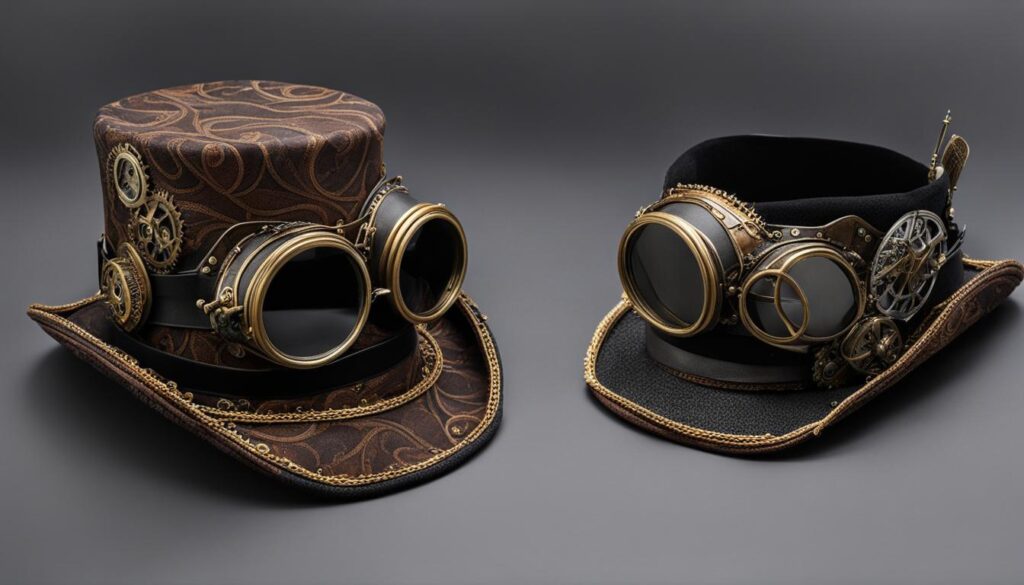
Table: Examples of Textile Embellishments in Steampunk Accessories
| Accessory | Textile Embellishment |
|---|---|
| Hats | Lace trim |
| Gloves | Lace cuffs |
| Belts | Metal trims |
| Bags | Embroidered fabric |
Repurposing and Upcycling with Textiles in Steampunk Projects
In the world of steampunk, repurposing and upcycling old objects is not just a creative endeavor, but a way to infuse vintage charm into your steampunk projects. By incorporating textiles into these repurposed items, you can add a touch of authenticity and uniqueness to your creations. From clothing to accessories, there are endless possibilities for repurposing and upcycling with textiles in steampunk crafts.
One popular way to repurpose textiles in steampunk projects is by retrofitting clothing. By adding gears, clockwork, and other mechanical components to jackets, vests, and skirts, you can transform ordinary garments into extraordinary steampunk fashion statements. The combination of vintage textiles and mechanical embellishments creates a visually captivating aesthetic that pays homage to the Victorian-era charm and the ingenuity of the Industrial Revolution.
“Repurposing old clothing and textiles not only gives them a new lease on life but also adds a touch of history and character to your steampunk creations.” – Steampunk Enthusiast
When it comes to upcycling with textiles in steampunk crafts, vintage objects play a significant role. Keys, gears, watches, and other antique components can be seamlessly integrated into clothing, accessories, and even home decor items. For example, a vintage leather belt can be repurposed as a steampunk-inspired cuff bracelet, while an old pocket watch can be transformed into a unique pendant or brooch.
| Repurposed Item | Description |
|---|---|
| Steampunk Vest | A retrofitted vest with gears, clockwork, and fabric embellishments. |
| Steampunk Cuff Bracelet | A repurposed vintage leather belt transformed into a stylish wrist accessory. |
| Steampunk Pocket Watch Pendant | An upcycled pocket watch turned into a unique and intriguing necklace pendant. |
By repurposing and upcycling with textiles in your steampunk projects, you not only contribute to sustainable fashion practices but also create one-of-a-kind pieces that tell a story. So, unleash your creativity and breathe new life into old objects as you embark on your steampunk journey.
Recommended Resources:
- Steampunk DIY Fashion: A Step-by-Step Guide – A comprehensive book that provides detailed instructions on repurposing textiles in steampunk fashion.
- Upcycling 101: Transforming Vintage Objects – A guidebook that offers tips and techniques for upcycling vintage objects in various crafts, including steampunk.
- Online Steampunk Communities – Join online steampunk communities to connect with fellow enthusiasts and exchange ideas on repurposing and upcycling with textiles.

Conclusion
Get ready to dive into the captivating world of DIY textile steampunk crafts on a budget. By incorporating textiles into your steampunk DIY projects, you can unleash your creativity and bring your unique vision to life.
With a wide range of fabrics and embellishments at your disposal, you can create one-of-a-kind steampunk fashion pieces that reflect your personal style. Whether you’re repurposing old clothing or starting from scratch, textiles play a vital role in achieving the authentic steampunk aesthetic.
From lace and trims to leather and fabric, the possibilities are endless. Create stunning accessories like hats, belts, and gloves that will transport you to a whimsical Victorian era fused with futuristic industrial elements. And don’t forget to explore the art of repurposing and upcycling vintage objects—let gears, keys, and watches breathe new life into your steampunk creations.
So, gear up for your next steampunk DIY adventure and let textiles be your guide. With a bit of ingenuity and a touch of mystery, you’ll be able to craft your very own textile-based steampunk masterpieces that are sure to impress.
FAQ
What fabrics are commonly used in steampunk DIY projects?
Fabrics like leather, lace, and cotton are commonly used in steampunk DIY projects.
How can I make my own steampunk fashion pieces?
With basic sewing skills and supplies like fabric, needles, and thread, you can create your own unique steampunk fashion pieces. Repurposing existing clothing or creating from scratch are popular approaches.
What are some examples of steampunk accessories that can incorporate textiles?
Hats, belts, gloves, bags, and tool belts are examples of steampunk accessories that can incorporate textiles. Lace and trims can be added to hats and gloves, while leather and fabric belts can showcase the industrial side of the steampunk aesthetic.
How can I repurpose and upcycle old objects with textiles in steampunk projects?
By using old gears, keys, watches, and other mechanical components, you can create unique clothing and accessories with a vintage charm. Retrofitted clothing and antique accessories can be integrated into steampunk fashion to add a touch of nostalgia.

